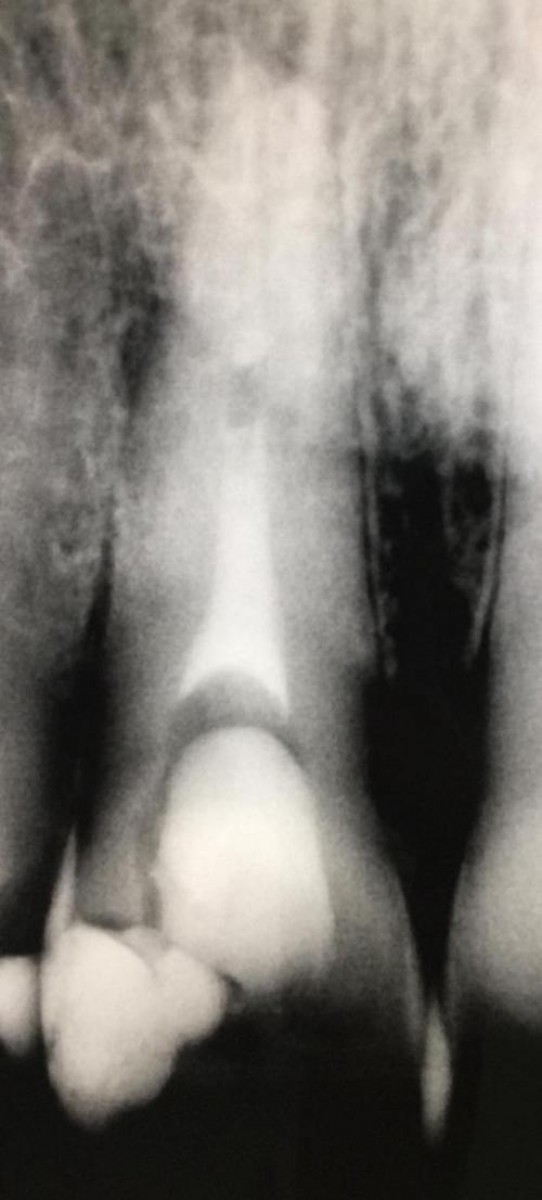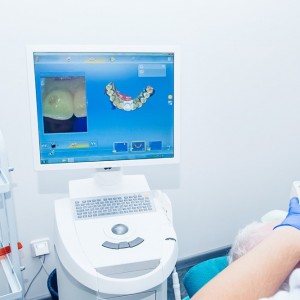
Which is the best restoration for endodontically treated maxillary central incisors with class III defects?
Simona Chirico
Restoration of endodontically treated maxillary central incisors with class III defects is a challenging procedures because the choice of which rehabilitation to choose depends on the amount of structure remaining. The aim is to give new functionality to the element but also to obtain a good aesthetic result, since we have to deal with an element of the frontal sector. Moreover, endodontically treated anterior teeth were found to have an high risk of biomechanical failure due to shear forces.
We can choose between different kind of restorations: direct restoration with composite; direct restoration with endodontic glass-fiber post and composite; veener restoration; veener restoration with endodontic glass-fiber post; crown restoration; crown restoration with endodontic glass-fiber post.
Which is the best solution?
Von Stein-Lausnitz et al. in their study published in the Journal of Adhesive Dentistry tried to give an answer.
MATERIALS AND METHODS
Seventy-two extracted human maxillary central incisors were endodontically treated and bi-proximal Class III cavities were prepared. They were randomly allocated to six groups (n = 12): direct restoration with composite (group C); direct restoration with composite and additional glass-fiber post (group CP); ceramic veneer restoration (group V); ceramic veneer restoration with endodontic glass-fiber post (group VP); ceramic crown restoration (group Cr); ceramic crown restoration and additional glass-fiber post (group CrP). They were exposed to thermomechanical loading (TML: 1.2 million cycles, 1 to 50 N; 6000 thermal cycles between 5°C and 55°C for 1 min each), and subsequently linearly loaded until failure (Fmax [N]) at an angle of 135° and 3 mm below the incisal edge on the palatal side. Statistical tests were performed using the Kruskall-Wallis and Mann-Whitney U-Test.
RESULTS
During dynamic loading by TML, one fracture of the incisale edge occurred in group C; one loss of composite restoration in group CP, and one crown fracture in group CrP.
Subsequent linear loading resulted in mean fracture load values [N] of:
- C = 483 ± 219,
- CP = 536 ± 281,
- V = 908 ± 293,
- VP = 775 ± 333,
- Cr = 549 ± 258,
- CrP = 593 ± 259.
The Kruskal-Wallis test showed significant differences of load capacity between groups (p < 0.05).
Mann-Whitney U-test revealed significantly lower maximum fracture load values of group C compared to group V (p = 0.014), after Bonferroni-Holm correction. Non-restorable root fracture with fracture lines more than 2mm below CEJ was the most frequent type of failure in all groups (68%).
CONCLUSIONS
Endodontically treated maxillary central incisors with Class III defects directly restored with composite are as loadable as indirect crown restorations. Compared to full-coverage restorations, less invasive veneers appear to be more beneficial. Additional placement of glass-fiber posts shows no positive effect.
For additional informations:
Direct or Indirect Restoration of Endodontically Treated Maxillary Central Incisors with Class III Defects? Composite vs Veneer or Crown Restoration
 Tag
Tag
 Related articles
Related articles
Restorative dentistry 03 November 2025
The worldwide interest of both dentists and patients in esthetic dentistry has affected decision-making in dental practice.
Restorative dentistry 12 September 2025
Traumatic tooth injuries involve function and aesthetics and cause damage that range from minimal enamel loss to complex fractures involving the pulp tissue and even loss of the tooth crown.
The purpose of restorative dentistry is to restore and maintain health and functional comfort of the natural dentition combined with satisfactory aesthetic appearance.
Oral surgery 15 July 2025
The influence of patients' decisions on treatment planning in restorative dentistry
As part of treatment planning, options are presented to patients by dentists. An informal discussion takes place involving a cost-benefit analysis and a treatment plan is agreed.
Restorative dentistry 01 July 2025
Advances in CAD/CAM Technology for Chairside Restorative Dentistry: A Workflow Analysis
Chairside CAD/CAM technology has revolutionized restorative dentistry, offering streamlined workflows and improved patient outcomes.
 Read more
Read more
Much like EMTs rushing to the scene after an accident, stem cells hurry to the site of a skull fracture to start mending the damage. A new finding has uncovered the signaling mechanism that triggers...
Products 05 November 2025
SimplyTest has launched a groundbreaking saliva-based test to detect high-risk strains of oral human papillomavirus (HPV), a major cause of oropharyngeal cancers.
News 05 November 2025
Perimetrics, Inc., a dental technology company pioneering quantitative diagnostics, announced today that the U.S. Food and Drug Administration (FDA) has granted clearance for the InnerView...
News 05 November 2025
On October 15, open enrollment for Medicare began nationwide. Hundreds of thousands of seniors in New Jersey will once again face the challenge of finding the right Medicare coverage, including the...
Digital Dentistry 04 November 2025
Digitalisation is an expanding field in dentistry and implementation of digital teaching methods in dental education is an essential part of modern education.















